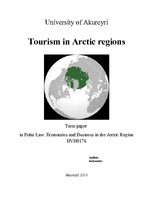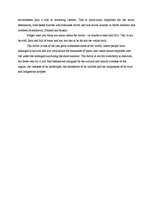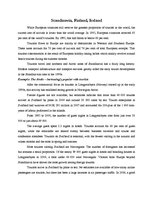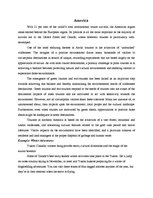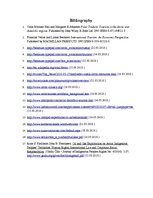Forget what you think you know about the Arctic – or maybe at least half of it. Yes, it can be cold, dark and full of snow and ice, but that is by far not the whole truth.
The Arctic is one of the last great wilderness areas of the world, where people have managed to survive and live with nature for thousands of years, and where nature explodes with life under the midnight sun during the short summer. The Arctic is not for everybody to discover, but those who try it will find themselves intrigued by the cultural and natural richness of the region: the vastness of its landscapes, the abundance of its wildlife and the uniqueness of its local and indigenous peoples
...
Recent years have seen a rapid expansion of tourist activity in the north and south polar regions. The poles have become highly attractive places to visit because of improvements in technology, the end of the cold war, changes in consumer preferences, increased accessibility, and the never-ending search for new marketable tourist products. Increasing numbers of tourists are seeking to visit these remote regions in order to experience relatively undisturbed natural history, impressive natural beauty, and interesting cultural and historical features. However, the polar regions are fragile environments, vulnerable to invasions of tourists, like other wilderness areas. Thus the growth of touristic activity of various kinds presents substantial management and regulatory challenges for government agencies.
